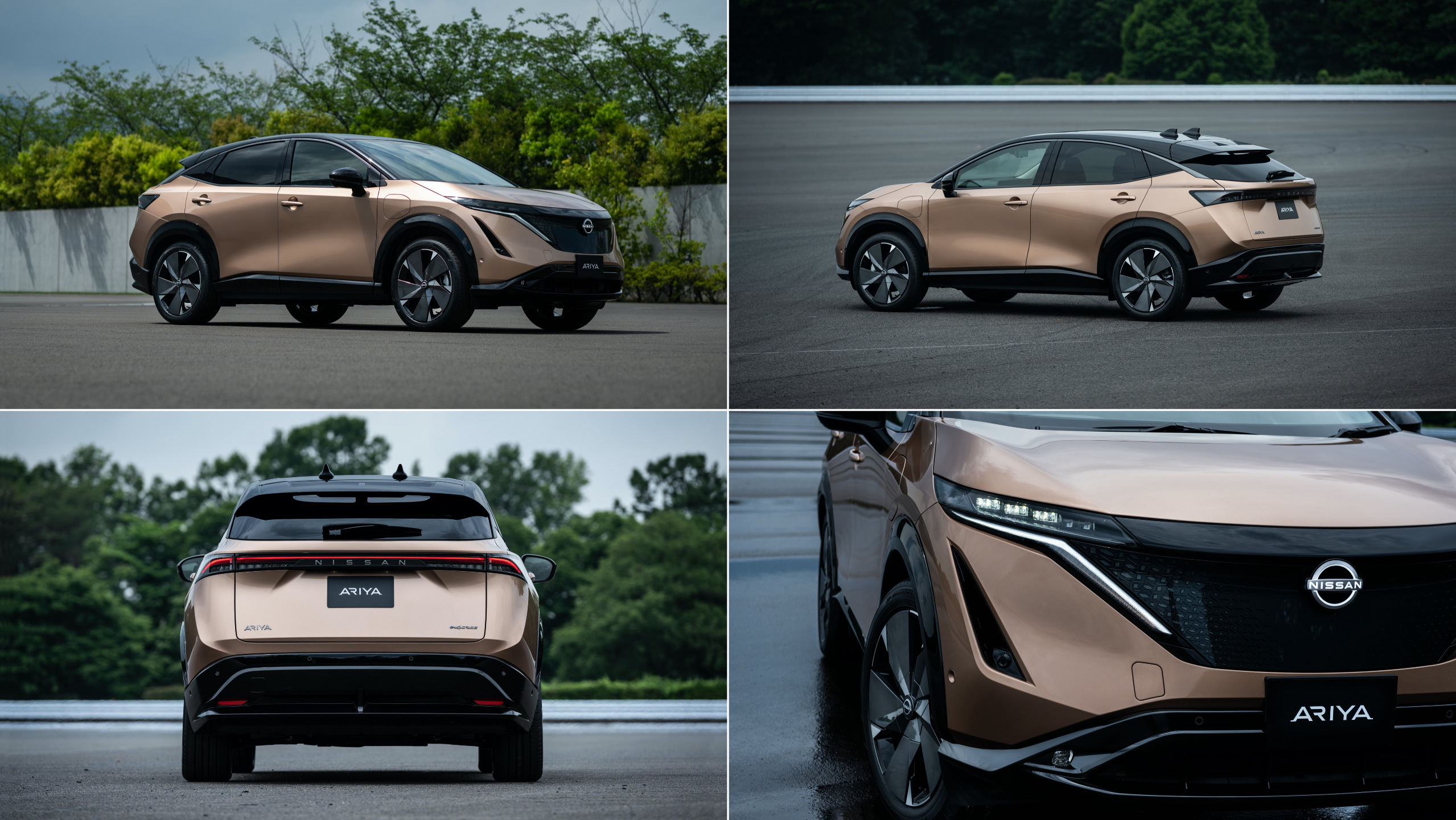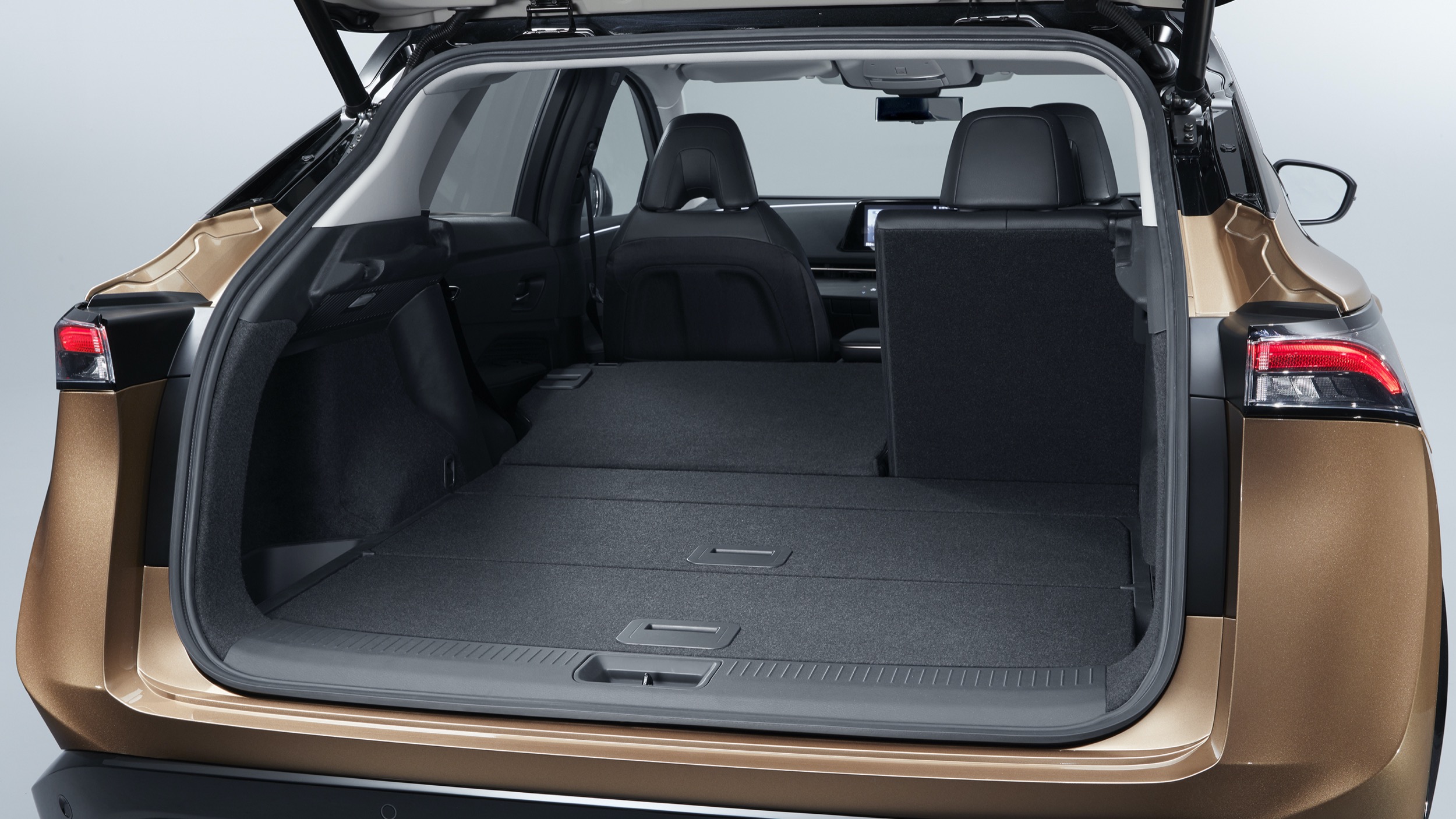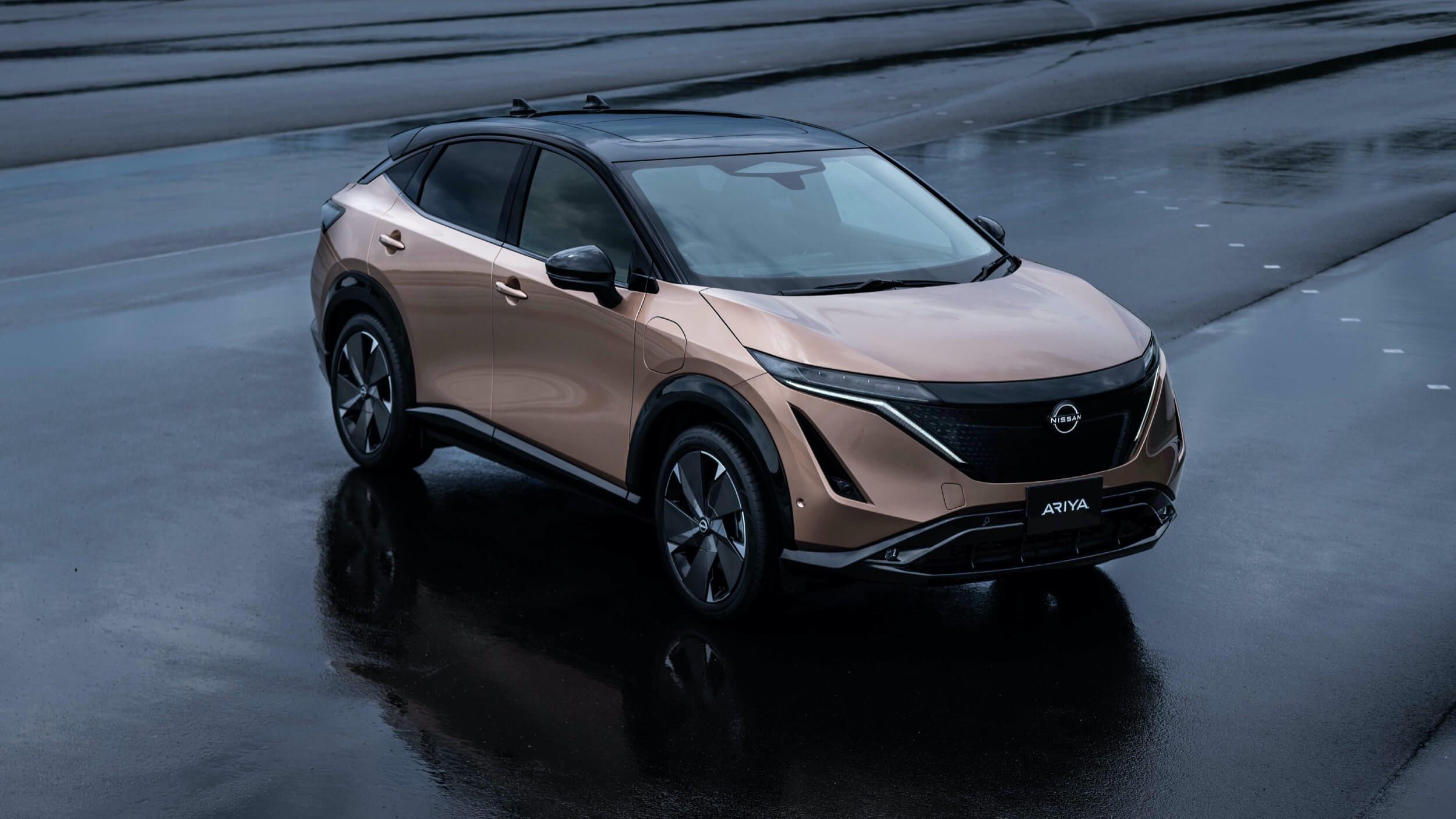The big picture: Nissan has taken the wraps off its next, high-tech EV, called the Ariya. What makes this model interesting is that the production version looks nearly identical - inside and out - to the concept revealed by the automaker at the Tokyo Motor Show last year. It's also a much more exciting EV than the Nissan Leaf, its long-running, slightly dull hatchback, and is meant to jump-start Nissan's journey to revival as a major player in the auto industry. The company is currently dealing with a massive decline in profits and was recently considering laying off nearly 15 percent of its global workforce (over 20,000 employees) due to the ongoing pandemic. It also has an active $90 million lawsuit against former chairman Carlos Ghosn, who fled from Japan to Lebanon in December last year after being accused of years of misconduct and financial embezzlement.
The mid-sized Ariya electric SUV is leading Nissan's charge into the next generation of EVs. The crossover has plenty of high-tech features on board, including a few firsts for a Nissan such as OTA updates, liquid-cooled batteries, dual screens with a full-color heads-up display. It also debuts the carmaker's new simplified logo.
In terms of the powertrain, Nissan will offer a front-wheel and all-wheel drive variant, each with two different-sized batteries. The $40,000 entry-level FWD model with a single motor and a 63 kWh battery will produce 215 hp and 221 lb-ft of torque, while an optional 87 kWh unit can be fitted to increase range up to 300 miles (EPA).
The AWD version will pack dual motors with the aforementioned batteries and will produce 389 hp and 443 lb-ft. Buyers looking at this high-performance variant will have to accept lower mileage than the base model as well as reduced cargo space due to the all-wheel-drive system. Nissan notes that the modular platform powering the Ariya will also underpin its future EVs, though it's still unknown which charging standard the company will use.

The interior, meanwhile, uses a pair of 12.3" touchscreens for instruments and navigation. The car's infotainment system will support wireless Apple CarPlay, Android Auto, and Amazon Alexa. There's an ambient light strip running along the entire width of the interior behind the displays, while underneath the screens is a full-length air vent with faux wood trim, interrupted only by the two-spoke steering wheel and a power/volume and hazard button in the middle.
Below them is a row of capacitive climate controls that sit next to the ignition button. These controls are etched on the trim and seem to disappear when the car is off. It's a neat little touch but one that could end up favoring style over substance.
Further down is the glovebox, alongside what appears to be a central hidden compartment. The center console is yet another high-tech zone, featuring touch-sensitive controls for selecting driver modes, turning on/off Nissan's e-pedal tech and a wireless charging spot, alongside a sliding cup holder cover and gear selector.

The five-seater SUV has a foldable second row of seats. The default cargo space is reported to be 16.5 cubic feet in the FWD variant and 14.6 in the AWD version. It'll also have plenty of active and passive safety tech onboard, including front and rear automatic emergency braking, lane-departure warning, blind-spot monitoring, rear cross-traffic alert, and automatic high-beam headlights as standard.
Despite the Ariya's tall profile, Nissan says the SUV's AWD system was inspired by the GT-R and employs a similar torque splitting system as the famous sports car. The vehicle is set to go on sale in Japan in mid-2021, while US buyers can expect availability a few months later.

